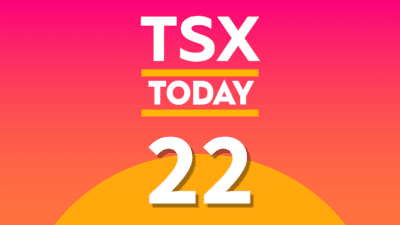Canadians got used to a long period of low interest rates until 2022, when they started rising. The Bank of Canada raised the policy interest rate to curb high inflation. The policy interest rate had been low since roughly 2009 up to the hikes that began in 2022. In the more than decade-long period of low interest rates, the policy interest rate was mostly around 0-1%. This environment boosted the valuations of stocks.
In an era of higher interest rates and potentially more hikes coming, stock valuations have come down. And here are some tips for Canadians.
Put short-term capital you don’t want to risk in GICs
You can get higher interest rates from traditional Guaranteed Investment Certificates (GICs), which are perfect for getting fixed income from interests with no risk on your principal. Currently, the best one-year GIC interest rate is about 5.75%.
Keep some cash on hand
Other than an emergency fund, you should keep some cash handy. Cash has become increasingly more valuable in an era of rising rates. Canadians can now get greater interest income from high-interest savings accounts.
By having some cash on hand, Canadians are able to invest in discounts. For example, you could buy bonds and dividend stocks on market corrections for higher yields with cash.
Invest in short-term and floating-rate bonds
Bond prices are inversely related to the change in interest rates. That is, when interest rates rise, bond prices fall. Bonds with long maturities are more sensitive to interest rate changes than ones with shorter maturities. Consequently, Investopedia noted that “short-term and floating-rate bonds are suitable investments during rising rates, as they reduce portfolio volatility.” Floating-rate bonds are less volatile because investors can earn higher interest rates from them in a rising-rate environment.
Investopedia also highlighted that “investing in rising interest rates can be done by investing in banks and brokerage firms, tech and healthcare stocks, and companies with large cash balances.” Here’s a stock investing example.
Buy Canadian bank stocks
Banks are generally able to benefit from a higher net interest margin when rates are rising. Unfortunately, because of the scarcity of capital, banks have been more prudent with their loan portfolios.
That said, the big Canadian bank stocks are excellent long-term investments. They are well regulated and well capitalized. In the current environment that has a higher risk of a recession, the Big Six Canadian banks are required to maintain a common equity tier-one (CET1) capital ratio of 11.5%. Reuters explains that “the ratio compares a bank’s capital against its risk-weighted assets to measure its resilience in a downturn.”
In the last reported quarter, Toronto-Dominion Bank (TSX:TD) had its CET1 ratio comfortably sitting at 15.2%. The elevated capital ratio has partly to do with the termination of the US$13.4 billion acquisition of U.S. regional bank First Horizon in May.
Importantly, TD Bank has a pattern of delivering returns on equity (ROE) in the teens range. Even during the pandemic year of 2020, it managed to achieve an ROE of 13.54%, according to Morningstar. The stock has made its investors wealthy over time. Despite the year-to-date decline of about 9%, TD stock has still delivered solid total returns of close to 9.9% per year over the last decade. These returns were supported by adjusted earnings-per-share growth of approximately 8.5% per year over the period.
On any stock weakness, long-term investors should pick up Canadian bank shares to lock in good dividend yields and target satisfying long-term returns. At $79.65 per share at writing, TD stock offers a nice dividend yield of 4.82%.
Review your goals and investing philosophy
Review why you’re investing. What are your medium- and long-term financial goals? Perhaps it’s to buy a car or a home or to save and invest for retirement. Here’s the Foolish investing philosophy, which can help you ride through the market volatility in a rising rate environment. Focus on the long term: invest consistently and diversify your portfolio.







